As another steamy summer stacked with headlines about crowded European hotspots and movements to rein the crowds in comes to a close, the debate over overtourism and adjacent issues shows no sign of going away.
Amsterdam, Barcelona, Venice: these cities are the poster children for the debate and by now, you expect their names to turn up in any piece about overtourism (and they will in this one), but the truth is that this trio is just the tip of the iceberg of European destinations grappling with tourism-related issues.
Below, you will find a list of European destinations that have taken concrete steps toward tamping down the effects of overtourism and improving life for locals and travelers alike, with many more expected to join them. A few of the names may even surprise you!
Ile-de-Bréhat, France
This beautiful island off the coast of Brittany, France proves that overcrowding concerns can happen anywhere in Europe. Earlier this summer, the island imposed a daily limit on daytrippers arriving in peak times to preserve the quality of life for locals and the overall visitor experience. If you're curious, the magic number allowed onto the island (excluding residents, second homeowners and workers) between 8:30 am and 2:30 pm is 4,700. The regulations are seasonal.
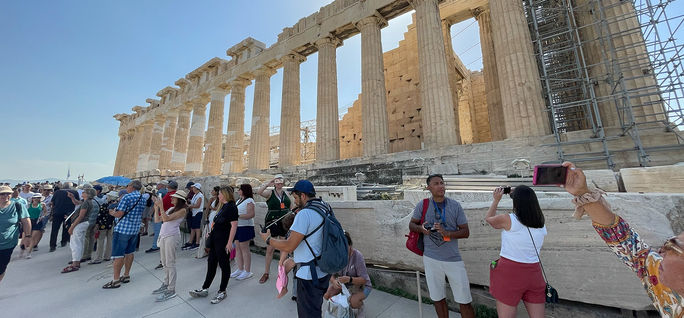
Crowds of tourists at the Acropolis in Athens, Greece (Photo Credit: Janeen Christoff)
Athens, Greece
We've all seen the photos of swarms of tourists baking in the sun trying their best to enjoy a visit to The Acropolis, the city's star attraction. After a couple of summers of growing discontent at the ancient monument, the number of visitors allowed to visit each day has now been reduced to 20,000, with each hour having a customized limit aimed at staggering arrivals.
Venice, Italy
The city known as "La Serenissima" has been known more for crowds than serenity lately, becoming one of the emblems of overtourism in Europe. This year has seen a raft of policies enacted to combat the issues, including an entry fee on certain days, a ban on megaphones (presumably aimed at tour guides) and a 25-person limit on tour groups.
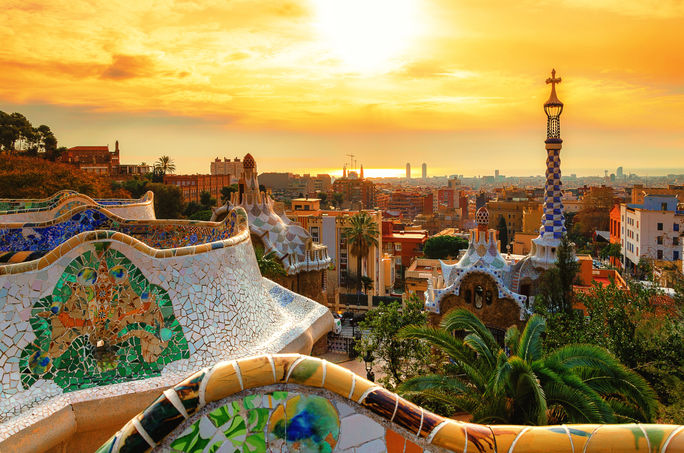
Barcelona at sunrise (Photo Credit: gatsi/Adobe Stock)
Barcelona, Spain
Perhaps no destination has garnered more headlines in this space this year than the Spanish city of Barcelona. The capital of the fiercely independent Catalonia region, the city has been aggressive at trying to turn the tide of overtourism, announcing this year a total ban on short-term apartment rentals, effective in 2028. The city also played a part in removing a bus route from Google Maps that tourists used to visit Park Güell and upped the tax on cruise ship passengers who spend less than 12 hours in the city.
Lisbon, Portugal
The Portuguese capital of Lisbon has recently announced intentions to cut the number of tuk-tuks on its streets significantly, as some locals have voiced concerns over the fact that their figures have ballooned in recent years. This is in addition to the announcement that the city's tourist tax will be increased this fall from two Euros to four Euros per night.
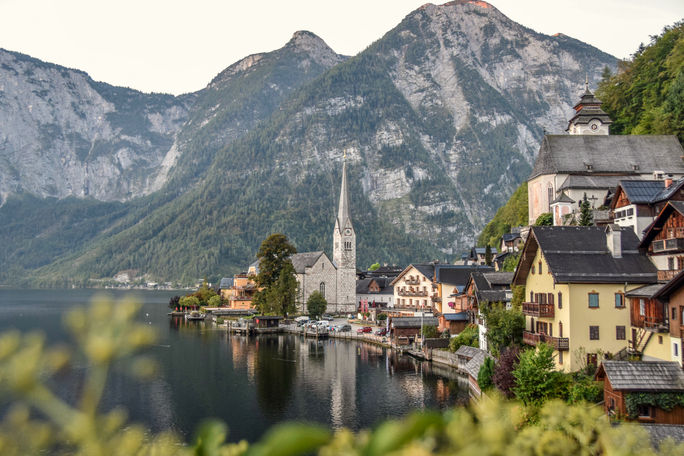
Hallstatt, Austria(Photo by Lauren Breedlove)
Hallstatt, Austria
Last autumn, this idyllic lakeside village in the heart of Austria erected wooden fences to block selfie-snappers as residents struck back at a feeling of being overrun. Why? Hallstatt is said to have helped inspire some of the imagery in Frozen and visitors just couldn't let go of their desire for a selfie, much to the dismay of local drivers.
Milan, Italy
The northern economic powerhouse of Milan may not be the first place you think of when it comes to crowd issues, but it recently made moves to address ongoing local concerns about rowdy behavior by revelers. This year, the city passed a regulation that forces bars and cafes (even gelato shops!) to close their outdoor seating at earlier times and takeaway restaurants to shutter earlier, too.
Seville, Spain
Built for the Ibero-American Exposition of 1929, The Plaza De Espana has evolved to become one of the most adored symbols of Seville. Under new proposals by the city, non-local visitors will have to pay to spin around this lovely square. Logistics are still being worked out, with the mayor declaring the plans necessary to preserve the plaza from damage and wear and tear.
Florence, Italy
In a much-ballyhooed move late last year, the birthplace of the Renaissance fired one of the first shots in the battle of short-term rentals by banning any new ones in its historic center. The law has since been overturned by local courts, but not on merit, just on some details of its execution. At the city's famous Galleria dell'Accademia, visitors have been met with a new layout and extended hours, all put in place in an attempt to distribute crowds in a better way.
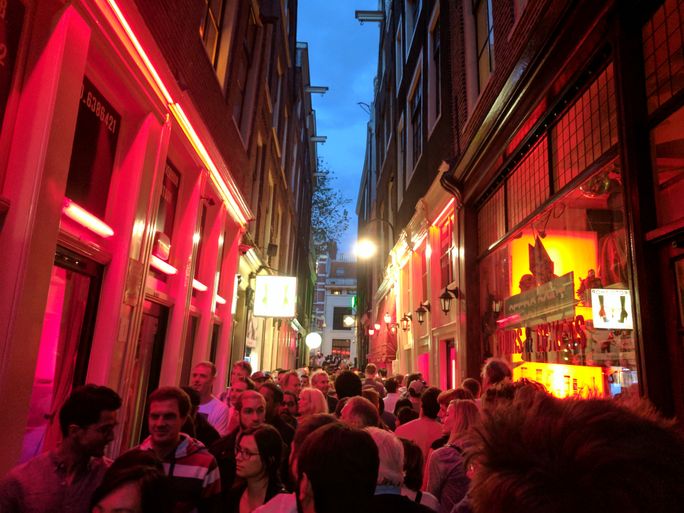
Red light district in Amsterdam (Photo via Lauren Bowman)
Amsterdam, The Netherlands
How hasn't the Dutch capital tried to tweak the tourism flow to its gabled streets? So far, the city has released an ad campaign telling certain types of tourists to "stay away", banned the construction of new hotels, reduced the amount of cruise ship dockings per year and made its tourist tax the highest in Europe. The city also announced that it will remove the cruise ship terminal entirely by 2035. Oh, and the city banned using cannabis on the street in the Red Light District and clamped down on opening hours for bars in the neighborhood.
Marseille, France
The second biggest city in France, Marseille may not see quite as many international tourists as Paris, but that hasn't stopped crowds from causing some issues at the nearby Calanques National Park. This sprawling outdoor wonderland is filled with cliffs and coves, and recently a daily visitor quota has been lodged to help preserve the flora and fauna of the area. In short, you'll have to book in advance and have an assigned QR code before entering the park.

Travelers who volunteer at the urban farm Øens Have can enjoy a free farm-to-table lunch with CopenPay. (Photo Credit: Lukas Bukoven)
Copenhagen, Denmark
The Danish capital continues to increase in popularity, but the city is trying to nip some potential overtourism issues in the bud. The summer, it rolled out a pilot program called CopenPay, an initiative to reward visitors who make eco-friendly choices like biking around town or joining a cleanup effort. Of course, CopenPay is not mandatory, but taking part could earn you points towards free activities or even a Danish farm-to-table lunch.
Istanbul, Turkey
After the city's famed Hagia Sophia was converted back to a mosque a while back, entry was free for everyone. Then, seemingly everyone showed up to visit, as attendance more than tripled between 2019 and 2022. In 2024, the Hagia Sophia rolled out new attendance guidelines and a stiff entry fee for non-Turkish visitors (approximately $26).
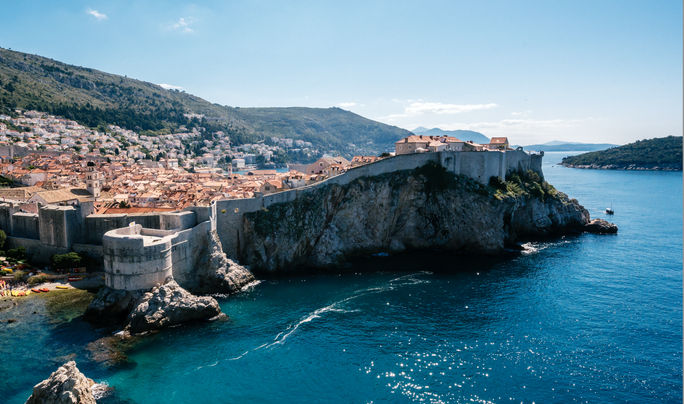
PHOTO: Dubrovnik, Croatia. (photo by Hans Brunk)
Dubrovnik, Croatia
The so-called "Pearl of the Adriatic" has been pushed to its limits regarding overtourism, installing caps in recent years on the amount of cruise ship passengers that can arrive each day. This action is in addition to issuing new fines for folks wearing swimwear in the Old Town and releasing a playful ad campaign nicely asking visitors to refrain from (loudly) rolling their suitcases over the cobblestones of the Old Town.
Coming Soon?
Long lauded as a less crowded alternative to Dubrovnik, Kotor in neighboring Montenegro may be next on the list to make serious changes. Reports have recently detailed locals' growing frustration with the feeling of being overrun with tourists (many from cruise ships) in the town during the high season.

Santorini in Greece (Photo Credit: maglara / Adobe Stock)
Last but not least, In a recent interview, the Prime Minister of Greece, Kyriakos Mitsotakis said he’s planning to put a cap on cruising, particularly for ships stopping at popular destinations like Santorini and Mykonos. According to Mitsotakis, “There are people spending a lot of money to be on Santorini, and they don’t want the island to be swamped.” He suggested cruise companies might soon have to bid for berths or face restrictions on the number of ships allowed to dock. Stay tuned.
For the latest travel news, updates and deals, subscribe to the daily TravelPulse newsletter.
Topics From This Article to Explore